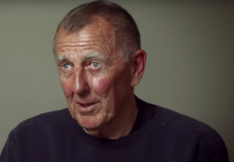Singleton Tate WPP – the deal that happened 15 years too late
 WPP’s takeover of STW Communications heralds the end of an era for Australia’s biggest holding group. Simon Canning spoke with founders Russell Tate and John Singleton to get their take on a deal that should have happened more than a decade ago.
WPP’s takeover of STW Communications heralds the end of an era for Australia’s biggest holding group. Simon Canning spoke with founders Russell Tate and John Singleton to get their take on a deal that should have happened more than a decade ago.
STW, Australia’s only genuinely successful publicly-floated communications company, saw its merger with WPP approved this week, cementing a relationship begun after the two companies came together in a rescue deal for WPP’s Ogilvy operations in Australia in the 1990s.
John Singleton, one of the men who built the business, told me a decade after he sold his last shares in WPP the deal was of “little interest” to him, but also admitted he still had little affection for Sir Martin Sorrell who he felt had never had the Australian operation’s best interests at heart.


Would love to hear the un-edited audio from this interview…
As an ex-singoes copywriter and now digital freelancer, I felt Singo certainly added a touch of character when he was around the agency all those years ago – and he helped put the chairs away after Mon morning meetings. Definitely an icon – dare I say – of the industry.
STW during the Singo & Tate years bred industry leaders. In contrast, WPP breeds managers. You’d barely recognise any of the WPP agency leaders in Australia. Desk bound, numbers focussed types. They have little in the way of a public profile and many of their client relationships end at the desk of the CMO.
Singo & Tate had the ear of many CEOs around Australia. You’re more likely to see a martech leader to have that type of relationship today.
Well there you go…
I always thought it was Singleton Thompson WPP (after J W Thompson)
You learn something new every day.